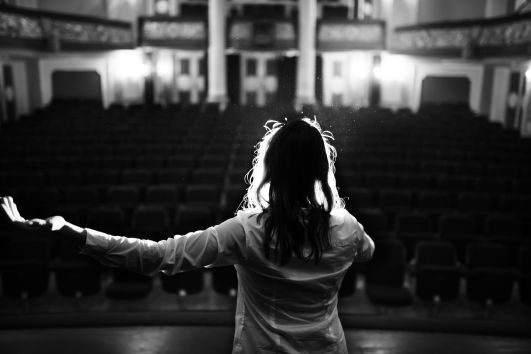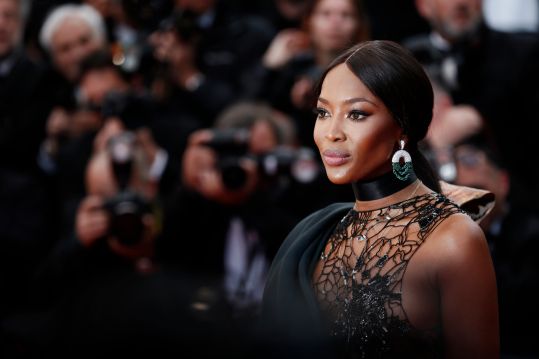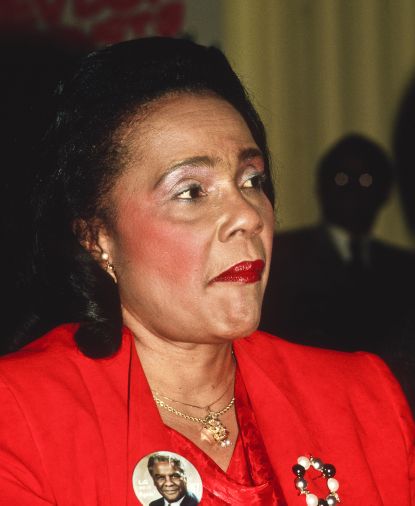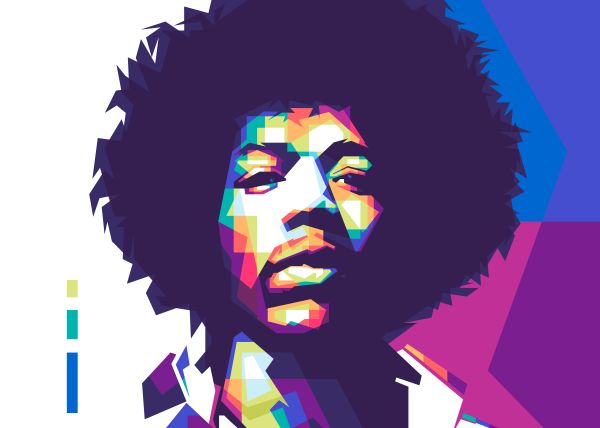You may know about the history of African American singers, but what about their contributions to opera? There are many great black opera singers who have made a mark on this art form. What do they have in common? An ability to expand the perception of what an opera singer can look like and sound like. If you’re reading this article, you probably already know that the world of opera can be pretty elitist. It’s not unusual for an audience to be almost entirely white and upper-class. That’s why it’s so impressive that there are so many great African American operatic performers. These are people who don’t just love singing as a hobby but instead pursue it as a career because they feel called to do so. Let’s take a look at some of the most notable examples:
In the past few years, several black opera singers have become known to a wider audience through their recordings and performances. Some black singers are so well-regarded that they are often referred to as “the new vanguard” of classical music performance.
Black singers who specialize in opera can be found all over the world, but this article will focus on American performers. The following information is not intended to be comprehensive or a list of the only excellent black opera singers currently working. It focuses instead on some key figures from recent history and those working today who have made an impact on the public consciousness about African-American performers of classical music.
Black opera singers are an essential part of the art, and they have been for centuries. We’ve put together a list of some of the most renowned black opera singers, as well as an overview of what they have in common. Many of these performers faced discrimination based on their race or culture. These men and women were forced to remain in the shadows for much of their careers in order to avoid damaging their reputations. In these pages, you will find information about some famous black opera singers and their experiences in this often-racist industry.
Kathleen Battle
Kathleen Battle is an African- American soprano famous for her impressive vocal abilities. Kathleen trained at the Cincinnati College Conservatory before pursuing a career in singing in the United States. Kathleen made her debut in the title role of Rossini’s Il barbiere di Siviglia at the Michigan Opera Theater in Detroit in 1975, and her first performance in a drama was as Rosina in Rossini’s Il barbiere di Siviglee in 1975. Her debut at the New York City Opera was as Susanna in Mozart’s Le nozze di Figaro in 1976. During this time, she also sang orchestral concerts in New York, Los Angeles, and Cleveland. Wagner’s Tannhäuser was her Metropolitan Opera debut in 1978, after which she appeared frequently at the Met in important roles until 1994. Kathleen made her first appearance at the Spoleto Festival in Italy in 1978 and the Glyndebourne Festival the following year. She debuted at the Glyndebourne Festival in England in 1979.
In Salzburg, she performed in concert, recital, and opera frequently as early as 1982. She played Susanna, Zerlina, and Despina, Mozart’s favorite roles, at many opera houses around the world. She has made appearances at many of the world’s greatest opera houses, including San Francisco, Chicago, Covent Garden, London, Geneva, Vienna, and Berlin. In 1985, she performed Mozart’s Coronation Mass at St. Peter’s Cathedral at the Vatican in Herbert von Karajan’s baton. Handel’s Semele was performed at Carnegie Hall in a highly praised performance in 1985. In 1990, Jessye Norman and Battle performed spirituals at Carnegie Hall in James Levine’s conducting. Her best-known roles in operas by Mozart and Strauss (Zdenka, Sophie, and Zerbinetta) have also been successful in Massenet’s Werther and Donizetti’s L’elisir d’amore.
Kathleen Battle’s vocal range is high and pure, with excellent charm. She has excellent technical control and has been able to sing colouratura roles such as Zerbinetta and Rosina, despite her approach being always more lyric. She delivers complete characterization in all of her roles, several of which were televised live from the Metropolitan Opera, New York, and later released on video.
Audra McDonald

A multifaceted performer, Audra McDonald is quite a well known name in the Broadway and film scenes; she is famously known for her artistic range and other versatile skills. Throughout her career, she has played in Master Class, Carousel, A Raisin in the Sun, Ragtime, and Porgy and Bess, winning six Tonys for her work. She is the first and only performer to have won in each of the four performance categories.
She has won accolades for her technical mastery, as well as for her expressive and compelling stage presence. For her contribution on the 2009 cast recording of Rise and Fall of the City of Mahagonny by Kurt Weill, she received two Grammy Award nominations. She was even awared the National Medal of Arts by President Barack Obama in. Outside of the stage, she has released her own studio recordings, such as Way Back to Paradise from 1998, where she featured the work of new theatre composers. She has also explored her favourite theatre and American Popular Standards on other CDs, including the appropriately named Happy Songs and 2013’s Go Back Home. She is also well-known for her television work, including her portrayal of Dr. Naomi Bennett on ABC’s Private Practice and appearances in movies including Cradle Will Rock (1999) and Disney’s live-action Beauty and the Beast (2017), where she was nominated for one of her five NAACP Image Award wins.
She has gained prominence for her technical mastery and emotive and charismatic stage presentation, as well as for her recognizable voice and stage presence. Beyond the stage, she has released two studio albums, including 1998’s Way Back to Paradise, which showcased the work of young theatre composers. She has also released such albums, such as Happy Songs and 2013’s Go Back Home, which showcase her passion for the theatre and American Popular Standards. Dr. Naomi Bennett on ABC’s Private Practice as well as her roles in movies such as 1999’s Cradle Will Rock, and Disney’s live-action Beauty and the Beast, received one of her five NAACP Image Award nods.
Final Words: Black Voices Matter
While these three singers are certainly exemplary of the best African American operatic performers, there are many others worth mentioning as well. As previously mentioned, there are many great black mezzo-sopranos, tenors, and basses, too. It’s important to remember that the voice of people of color is often ignored in the classical music world. This has a lot to do with the fact that many classical venues are elitist, segregated, and unwelcoming of diversity. If you love singing, there are many operatic paths you can take. You don’t have to follow the same path as these three singers, but you can draw inspiration from their successes. It’s up to us, as people of color, to speak up and assert ourselves as opera singers. Only then can we finally be heard.






 Horne began her professional career as a vocalist while she was just a teenager, beginning her career in the nightclubs of Harlem and establishing herself as a performer. It was then that Noble Sissle, who was the bandleader at the time, became aware of her presence and took attention. When she was only 16 years old, she gave her first performance in a professional setting. At the time, she was performing with Sissle’s band. Not long after that, she began to make cameos in a variety of revues that were put on at the Cotton Club. In 1934, Lena Horne became a member of the very first all-Black ensemble to perform in the Ziegfeld Follies. The year in question was the one in which she became famous. There, she was introduced to the saxophone Lennie Hayton for the very first time. Lennie Hayton would later go on to become her future husband. In 1937, when there were still many regions in the country where it was illegal to marry someone of a different race, the couple decided to have their wedding behind closed doors. This decision was made because there were still many regions in the country where it was illegal to marry someone of a different race.
Horne began her professional career as a vocalist while she was just a teenager, beginning her career in the nightclubs of Harlem and establishing herself as a performer. It was then that Noble Sissle, who was the bandleader at the time, became aware of her presence and took attention. When she was only 16 years old, she gave her first performance in a professional setting. At the time, she was performing with Sissle’s band. Not long after that, she began to make cameos in a variety of revues that were put on at the Cotton Club. In 1934, Lena Horne became a member of the very first all-Black ensemble to perform in the Ziegfeld Follies. The year in question was the one in which she became famous. There, she was introduced to the saxophone Lennie Hayton for the very first time. Lennie Hayton would later go on to become her future husband. In 1937, when there were still many regions in the country where it was illegal to marry someone of a different race, the couple decided to have their wedding behind closed doors. This decision was made because there were still many regions in the country where it was illegal to marry someone of a different race.










